A100 Steel Alloy Powder
$0.00
A100 Steel Alloy Powder
| Product | A100 Steel Alloy Powder |
| CAS No. | N/A |
| Appearance | Silvery-Gray Powder |
| Purity | ≥99%, ≥99.9%, ≥95%(Other purities are also available) |
| APS | 1-5 µM, 10-53 µM (Can be customized), Ask for other available size range. |
| Ingredient | Fe-0.5C-1.5Ni-0.5Cr |
| Density | 8.22g/cm3 |
| Molecular Weight | N/A |
| Product Codes | NCZ-DCY-245/25 |
A100 Steel Alloy Description:
A100 Steel Alloy Powder is one of the numerous advanced ceramic materials manufactured by Nanochemazone. Nanochemazone produces too many standard grades when applicable, including Mil Spec (military grade); ACS, Reagent and Technical Grade; Food, Agricultural and Pharmaceutical Grade; Optical Grade, USP and EP/BP (European Pharmacopoeia/British Pharmacopoeia) and follows applicable ASTM testing standards. Typical and custom packaging is available. Additional technical, research and safety (MSDS) information are available. Please request a quote above for more information on lead time and pricing
A100 Steel Alloy Powder Related Information :
Storage Conditions:
Airtight sealed, avoid light and keep dry at room temperature.
Please contact us for customization and price inquiry
Email: [email protected]
Note: We supply different size ranges of Nano and micron as per the client’s requirements and also accept customization in various parameters.
A100 steel alloy powder
A100 steel alloy powder is a specialized form of steel that consists of a precise blend of iron and other alloying elements. It is manufactured by atomization, a process that involves rapidly solidifying molten metal into fine powder particles. This fine powder exhibits excellent flowability and can be easily consolidated into various shapes using powder metallurgy techniques.
Overview of A100 Steel Alloy Powder
A100 stainless steel contains high levels of nickel and manganese along with chromium, nitrogen and carbon to achieve outstanding low temperature toughness and ductility. It retains excellent impact strength and resistance to cryogenic embrittlement down to the temperature of liquid helium.
Key characteristics of A100 powder include:
Excellent low temperature toughness and ductility
High impact strength at cryogenic temperatures
Good strength and hardness at room temperature
Very good weldability and fabricability
Resistant to cryogenic embrittlement
Available in various particle size distributions
A100 powder is designed for applications requiring thermal stability and toughness at extremely low temperatures such as liquid natural gas storage and transportation. This article provides a detailed overview of this alloy powder.
Chemical Composition of A100 Powder
| Element | Weight % |
| Nickel (Ni) | 9-11% |
| Manganese (Mn) | 12-14% |
| Chromium (Cr) | 14-16% |
| Nitrogen (N) | 0.15-0.30% |
| Carbon (C) | 0.08% max |
| Silicon (Si) | 1% max |
| Iron (Fe) | Balance |
A100 powder possesses the following properties:
| Property | Value |
| Density | 7.9-8.1 g/cm3 |
| Melting Point | 1400-1450°C |
| Thermal Conductivity | 12 W/mK |
| Electrical Resistivity | 0.80 μΩ.cm |
| Young’s Modulus | 190-210 GPa |
| Poisson’s Ratio | 0.29-0.30 |
| Tensile Strength | 620 MPa |
| Yield Strength | 275 MPa |
| Elongation | 35-40% |
| Impact Strength | 50-120 J at -196°C |
A100 maintains excellent ductility and impact strength even at the temperature of liquid helium making it suitable for the most demanding cryogenic applications.
Production Method for A100 Powder
A100 powder can be produced via:
Gas Atomization – High pressure inert gas used to atomize the molten alloy resulting in fine spherical powder ideal for AM.
Water Atomization – High velocity water jet breaks up the molten stream into irregular powder particles. Lower cost but higher oxygen pickup.
Mechanical Alloying – Ball milling of blended elemental powders followed by sintering and secondary atomization.
Gas atomization allows excellent control over particle size distribution, shape, oxygen pickup and microcleanliness.
Typical applications for A100 powder include:
Additive Manufacturing – Used in laser powder bed fusion and binder jetting for cryogenic parts like valve bodies, pump components, storage tanks etc.
Metal Injection Molding – To manufacture small, complex cryogenic parts needing high ductility and impact strength.
Thermal Spray Coatings – Wire arc spray deposition to produce coatings providing cryogenic resistance.
Cryogenic Vessels – Liners, fittings, fasteners, forged and cast parts for storage, transportation of liquefied natural gas.
Cryocoolers – Powder forged compressor parts, regenerator housings requiring high cryogenic toughness.
Specifications of A100 Powder
A100 powder is available under various size ranges, shapes and grades:
Particle Size: From 10-45 μm for AM methods, up to 150 μm for thermal spray processes.
Morphology: Spherical, irregular and blended shapes. Smooth spherical powder provides optimal flow and packing density.
Purity: From commercial to high purity grades based on application requirements.
Oxygen Content: Levels maintained below 2000 ppm for most applications.
Flow Rate: Powder customized for flow rates above 25 s/50 g.
Storage and Handling of A100 Powder
A100 powder requires controlled storage and handling:
Store in sealed containers under inert gas to prevent oxidation
Avoid accumulation of fine powder to minimize dust explosion risks
Use proper grounding, ventilation, PPE when handling powder
Prevent contact with moisture, acids, strong oxidizers
Follow recommended safety practices from supplier SDS
Inert gas glove box techniques are preferred when handling reactive alloy powders like A100.
Inspection and Testing of A100 Powder
Key quality control tests performed on A100 powder:
Chemical analysis using OES or XRF to ensure composition is within specified limits
Particle size distribution as per ASTM B822 standard
Morphology analysis through SEM imaging
Powder flow rate measured as per ASTM B213 standard
Density determination by helium pycnometry
Impurity testing by ICP-MS
Microstructure characterization by X-ray diffraction
Thorough testing ensures the powder meets the required chemical, physical and microstructural characteristics for cryogenic applications.
Comparison Between A100 and 304L Stainless Steel Powders
A100 and 304L stainless steel powders compared:
| Parameter | A100 | 304L |
| Type | Austenitic | Austenitic |
| Ni content | 9-11% | 8-12% |
| Low temperature toughness | Excellent | Poor |
| Corrosion resistance | Moderate | Excellent |
| Cost | Higher | Lower |
| Weldability | Very good | Excellent |
| Applications | Cryogenic parts | Automotive, appliances |
A100 offers exceptional low temperature toughness whereas 304L provides better overall corrosion resistance at lower cost.
A100 Powder FAQs
Q: How is A100 steel alloy powder produced?
A: A100 powder is commercially produced using gas atomization, water atomization and mechanical alloying followed by sintering. Gas atomization provides the best control of characteristics.
Q: What are the main applications of A100 powder?
A: The major applications include additive manufacturing, thermal spray coatings, metal injection molding, and powder metallurgy of cryogenic parts needing high ductility and impact strength at extremely low temperatures.
Q: What is the typical A100 powder size used for binder jetting AM?
A: For binder jetting process, the common A100 powder size range is 20-45 microns with spherical morphology to enable good powder packing and binder infiltration.
Q: Does A100 powder require any special handling precautions?
A: Yes, it is recommended to handle A100 powder carefully under controlled humidity and inert atmosphere using proper grounding, ventilation and PPE.
Q: Where can I purchase A100 powder suitable for cryogenic storage vessels?
A: For cryogenic applications needing high toughness, A100 powder can be purchased from leading manufacturer.
Category: Iron Based Alloy Powder
Description
Description
Note: For pricing & ordering information, please get in touch with us at [email protected]
Please contact us for quotes on Larger Quantities and customization. E-mail: [email protected]
Customization:
If you are planning to order large quantities for your industrial and academic needs, please note that customization of parameters (such as size, length, purity, functionalities, etc.) is available upon request.
NOTE:
Images, pictures, colors, particle sizes, purity, packing, descriptions, and specifications for the real and actual goods may differ. These are only used on the website for the purposes of reference, advertising, and portrayal. Please contact us via email at [email protected] or by phone at (+1 780 612 4177) if you have any
Reviews (0)
Only logged in customers who have purchased this product may leave a review.
Shipping & Delivery
Related products
17-4PH Stainless Steel Powder
$0.00
17-4PH Stainless Steel Powder
| Product | 17-4PH Stainless Steel Powder |
| CAS No. | 7439-89-6 |
| Appearance | Grey Powder |
| Purity | ≥99%, ≥99.9%, ≥95%(Other purities are also available) |
| APS | 1-5 µM, 10-53 µM (Can be customized), Ask for other available size range. |
| Ingredient | Fe-Cr-Ni-Cu-Nb |
| Density | 7.75g/cm3 |
| Molecular Weight | N/A |
| Product Codes | NCZ-DCY-336/25 |
17-4PH Stainless Steel Description:
17-4PH Stainless Steel Powder is one of the numerous advanced ceramic materials manufactured by Nanochemazone. Nanochemazone produces too many standard grades when applicable, including Mil Spec (military grade); ACS, Reagent and Technical Grade; Food, Agricultural and Pharmaceutical Grade; Optical Grade, USP and EP/BP (European Pharmacopoeia/British Pharmacopoeia) and follows applicable ASTM testing standards. Typical and custom packaging is available. Additional technical, research and safety (MSDS) information are available. Please request a quote above for more information on lead time and pricing.17-4PH Stainless Steel Powder Related Information :
Storage Conditions: Airtight sealed, avoid light and keep dry at room temperature. Please contact us for customization and price inquiry Email: [email protected] Note: We supply different size ranges of Nano and micron as per the client’s requirements and also accept customization in various parameters. 17-4PH Stainless Steel Powder 17-4PH is a precipitation hardening stainless steel powder widely used in additive manufacturing across aerospace, medical, automotive, and general engineering sectors. It offers an excellent combination of high strength, good corrosion resistance, and weldability. Overview of 17-4PH Stainless Steel Powder 17-4PH is a precipitation hardening stainless steel powder widely used in additive manufacturing across aerospace, medical, automotive, and general engineering sectors. It offers an excellent combination of high strength, good corrosion resistance, and weldability. This article provides a detailed guide to 17-4PH powder covering composition, properties, AM process parameters, applications, specifications, suppliers, handling, inspection, comparisons, pros and cons, and FAQs. Key information is presented in easy-to-reference tables. Composition of 17-4PH Stainless Steel Powder The composition of 17-4PH powder is:| Element | Weight % | Purpose |
| Iron | Balance | Principal matrix element |
| Chromium | 15 – 17.5 | Oxidation resistance |
| Copper | 3 – 5 | Precipitation hardening |
| Nickel | 3 – 5 | Austenite stabilizer |
| Niobium | 0.15 – 0.45 | Carbide former |
| Manganese | 1 max | Deoxidizer |
| Silicon | 1 max | Deoxidizer |
| Carbon | 0.07 max | Strengthener and carbide former |
| Property | Description |
| High strength | Up to 1310 MPa tensile strength when aged |
| Hardness | Up to 40 HRC in aged condition |
| Corrosion resistance | Comparable to 316L stainless in many environments |
| Toughness | Superior to martensitic stainless steels |
| Wear resistance | Better than 300 series stainless steels |
| High temperature stability | Strength maintained up to 300°C |
| Parameter | Typical value | Purpose |
| Layer height | 20-100 μm | Balance speed and resolution |
| Laser power | 150-400 W | Sufficient melting without evaporation |
| Scan speed | 400-1000 mm/s | Density versus production rate |
| Hatch spacing | 100-200 μm | Density and mechanical properties |
| Support structure | Minimal | Easy removal |
| Hot isostatic pressing | 1120°C, 100 MPa, 3 hrs | Eliminate porosity |
| Industry | Applications |
| Aerospace | Structural brackets, fixtures, actuators |
| Medical | Dental implants, surgical instruments |
| Automotive | High strength fasteners, gears |
| Consumer products | Watch cases, sporting equipment |
| Industrial | End-use metal tooling, jigs, fixtures |
| Parameter | Specification |
| Particle size range | 15-45 μm typical |
| Particle shape | Spherical morphology |
| Apparent density | > 4 g/cc |
| Tap density | > 6 g/cc |
| Hall flow rate | > 23 sec for 50 g |
| Purity | >99.9% |
| Oxygen content | <100 ppm |
| Method | Parameters Tested |
| Sieve analysis | Particle size distribution |
| SEM imaging | Particle morphology |
| EDX | Chemistry and composition |
| XRD | Phases present |
| Pycnometry | Density |
| Hall flow rate | Powder flowability |
| Alloy | Strength | Corrosion Resistance | Cost | Printability |
| 17-4PH | Excellent | Good | Medium | Good |
| 316L | Medium | Excellent | Medium | Excellent |
| IN718 | Very High | Good | High | Fair |
| CoCrMo | Medium | Fair | Medium | Good |
| Pros | Cons |
| High strength-to-weight ratio | Lower oxidation resistance than austenitic stainless steels |
| Good combination of strength and corrosion resistance | Required post-processing like HIP and heat treatment |
| Lower cost than exotic alloys | Controlled atmosphere storage needed |
| Established credentials in AM | Difficult to weld and machine |
| Properties match wrought material | Susceptible to pitting and crevice corrosion |
17-4PH Stainless Steel Powder
$0.00
17-4PH Stainless Steel Powder
| Product | 17-4PH Stainless Steel Powder |
| CAS No. | 7439-89-6 |
| Appearance | Gray Powder |
| Purity | ≥99%, ≥99.9%, ≥95%(Other purities are also available) |
| APS | 1-5 µM, 10-53 µM (Can be customized), Ask for other available size range. |
| Ingredient | Fe-Cr-Ni-Cu-Nb |
| Density | 7.75g/cm3 |
| Molecular Weight | N/A |
| Product Codes | NCZ-DCY-347/25 |
17-4PH Stainless Steel Description:
17-4PH Stainless Steel Powder is one of the numerous advanced ceramic materials manufactured by Nanochemazone. Nanochemazone produces too many standard grades when applicable, including Mil Spec (military grade); ACS, Reagent and Technical Grade; Food, Agricultural and Pharmaceutical Grade; Optical Grade, USP and EP/BP (European Pharmacopoeia/British Pharmacopoeia) and follows applicable ASTM testing standards. Typical and custom packaging is available. Additional technical, research and safety (MSDS) information are available. Please request a quote above for more information on lead time and pricing.17-4PH Stainless Steel Powder Related Information :
Storage Conditions: Airtight sealed, avoid light and keep dry at room temperature. Please contact us for customization and price inquiry Email: [email protected] Note: We supply different size ranges of Nano and micron as per the client’s requirements and also accept customization in various parameters. Best 17-4PH stainless steel powder for 3D Printing 17-4PH powder, also known as 17-4 Precipitation Hardening stainless steel powder, is a high-strength, corrosion-resistant material used in various industries. It belongs to the martensitic stainless steel family and offers an excellent combination of mechanical properties and corrosion resistance. The “17-4PH” designation refers to the composition of the alloy, which consists of approximately 17% chromium, 4% nickel, 4% copper, and a small amount of other elements. Overview of 17-4PH Stainless Steel Powder for 3D Printing 17-4PH is a precipitation hardening stainless steel powder widely used for additive manufacturing of high-strength, corrosion-resistant components across aerospace, medical, automotive, and general engineering applications. This article provides a detailed guide to 17-4PH powder for 3D printing. It covers composition, properties, print parameters, applications, specifications, suppliers, handling, inspection, comparisons, pros and cons, and FAQs. Key information is presented in easy-to-reference tables. Composition of 17-4PH Powder 17-4PH is a chromium-copper precipitation hardening stainless steel with a composition of:| Element | Weight % | Purpose |
| Iron | Balance | Principal matrix element |
| Chromium | 15 – 17.5 | Oxidation resistance |
| Copper | 3 – 5 | Precipitation hardening |
| Nickel | 3 – 5 | Austenite stabilizer |
| Niobium | 0.15 – 0.45 | Carbide former |
| Manganese | 1 max | Deoxidizer |
| Silicon | 1 max | Deoxidizer |
| Carbon | 0.07 max | Strengthener and carbide former |
| Property | Description |
| High strength | Tensile strength up to 1310 MPa in aged condition |
| Hardness | Up to 40 HRC when aged |
| Corrosion resistance | Comparable to 316L stainless in many environments |
| Toughness | Superior to martensitic stainless steels |
| Wear resistance | Better than 300 series stainless steels |
| High temperature stability | Strength maintained up to 300°C |
| Parameter | Typical value | Purpose |
| Layer height | 20-100 μm | Balance speed and resolution |
| Laser power | 150-400 W | Sufficient melting without evaporation |
| Scan speed | 400-1000 mm/s | Productivity vs density |
| Hatch spacing | 100-200 μm | Density and properties |
| Support structure | Minimal | Easy removal |
| Hot isostatic pressing | 1120°C, 100 MPa, 3h | Eliminate porosity |
| Industry | Applications |
| Aerospace | Structural brackets, fixtures, actuators |
| Medical | Dental implants, surgical instruments |
| Automotive | High strength fasteners, gears |
| Consumer | Watch cases, sporting equipment |
| Industrial | End-use metal tooling, jigs, fixtures |
| Parameter | Specification |
| Particle size range | 15-45 μm typical |
| Particle shape | Spherical morphology |
| Apparent density | > 4 g/cc |
| Tap density | > 6 g/cc |
| Hall flow rate | > 23 sec for 50 g |
| Purity | >99.9% |
| Oxygen content | <100 ppm |
| Method | Parameters Checked |
| Sieve analysis | Particle size distribution |
| SEM imaging | Particle morphology |
| EDX | Chemistry and composition |
| XRD | Phases present |
| Pycnometry | Density |
| Hall flow rate | Powder flowability |
| Alloy | Strength | Corrosion Resistance | Cost | Weldability |
| 17-4PH | Excellent | Good | Medium | Fair |
| 316L | Medium | Excellent | Medium | Excellent |
| IN718 | Good | Good | High | Fair |
| CoCr | Medium | Fair | Medium | Excellent |
| Pros | Cons |
| High strength-to-weight ratio | Lower oxidation resistance than austenitic stainless steels |
| Good combination of strength and corrosion resistance | Required post-processing like HIP and heat treatment |
| Lower cost than exotic alloys | Controlled atmosphere storage needed |
| Established credentials in AM | Difficult to weld and machine |
| Comparable properties to wrought material | Susceptible to pitting and crevice corrosion |
300M Stainless Steel Powder
$0.00
300M Stainless Steel Powder
| Product | 300M Stainless Steel Powder |
| CAS No. | N/A |
| Appearance | Silver-Gray Powder |
| Purity | ≥99%, ≥99.9%, ≥95%(Other purities are also available) |
| APS | 1-5 µM, 10-53 µM (Can be customized), Ask for other available size range. |
| Ingredient | Fe-Cr-Ni |
| Density | 7.85g/cm3 |
| Molecular Weight | N/A |
| Product Codes | NCZ-DCY-337/25 |
300M Stainless Steel Description:
300M Stainless Steel Powder is one of the numerous advanced ceramic materials manufactured by Nanochemazone. Nanochemazone produces too many standard grades when applicable, including Mil Spec (military grade); ACS, Reagent and Technical Grade; Food, Agricultural and Pharmaceutical Grade; Optical Grade, USP and EP/BP (European Pharmacopoeia/British Pharmacopoeia) and follows applicable ASTM testing standards. Typical and custom packaging is available. Additional technical, research and safety (MSDS) information are available. Please request a quote above for more information on lead time and pricing.300M Stainless Steel Powder Related Information :
Storage Conditions: Airtight sealed, avoid light and keep dry at room temperature. Please contact us for customization and price inquiry Email: [email protected] Note: We supply different size ranges of Nano and micron as per the client’s requirements and also accept customization in various parameters. 300M Stainless Steel Powder 300M stainless steel powder is a specialized material used in powder metallurgy and additive manufacturing applications. This high-alloy austenitic stainless steel exhibits excellent corrosion resistance and high strength properties. 300M powder can be used to create complex metal components using advanced manufacturing techniques like selective laser sintering (SLS), direct metal laser sintering (DMLS), and binder jetting. The fine spherical powders spread easily and sinter uniformly, producing dense parts. 300M has a high nickel and chromium content which gives it excellent corrosion resistance comparable to 304 and 316 stainless steel. The composition is controlled within narrow ranges as shown below: 300M Stainless Steel Powder Composition| Element | Composition Range |
| Carbon (C) | 0.05% max |
| Silicon (Si) | 1.0% max |
| Manganese (Mn) | 2.0% max |
| Phosphorus (P) | 0.03% max |
| Sulfur (S) | 0.01% max |
| Chromium (Cr) | 24.0-26.0% |
| Nickel (Ni) | 19.0-22.0% |
| Molybdenum (Mo) | 4.0-5.0% |
| Nitrogen (N) | 0.10-0.16% |
| Iron (Fe) | Balance |
| Property | Value |
| Density | 7.9 g/cm3 |
| Melting Point | 1370°C (2500°F) |
| Thermal Conductivity | 12 W/m-K |
| Electrical Resistivity | 72 μΩ-cm |
| Modulus of Elasticity | 200 GPa |
| Poisson’s Ratio | 0.29 |
| Tensile Strength | 165ksi (1140 MPa) |
| Yield Strength | 140ksi (965 MPa) |
| Elongation | 35% |
| Industry | Common Applications |
| Aerospace | Engine components, structural parts, landing gear |
| Automotive | Valve bodies, pump parts, turbocharger components |
| Medical | Implants, prosthetics, surgical instruments |
| Chemical | Pumps, valves, pipe fittings |
| Oil & Gas | Downhole tools, wellhead parts, offshore components |
| Industrial | Food processing equipment, press plates, dies and molds |
| Consumer | Watch cases, jewelry, decorative artware |
| Parameter | Typical Values |
| Particle shape | Spherical, satellite, irregular |
| Particle size | 15-45 μm, 15-53 μm, 53-150 μm |
| Apparent density | 2.5-4.5 g/cm3 |
| Tap density | 3.5-4.5 g/cm3 |
| Flow rate | 15-25 s/50g |
| Carbon content | < 0.05 wt% |
| Oxygen content | < 0.15 wt% |
| Nitrogen content | 0.10-0.16 wt% |
| Hydrogen content | < 0.0015 wt% |
| Test | Details |
| Chemical analysis | ICP-OES, ICP-MS, wet chemistry, spark OES |
| Particle size distribution | Laser diffraction, sieve analysis |
| Morphology | SEM imaging, microscopy |
| Powder density | Scott volumeter, Hall flowmeter |
| Flow rate | Hall flowmeter |
| Moisture analysis | Thermogravimetric analysis |
| Test | Details |
| Density | Archimedes’, Helium pycnometry |
| Surface roughness | Profilometer, interferometry |
| Hardness | Rockwell, Vickers, Brinell |
| Tensile strength | ASTM E8 |
| Microstructure | Optical microscopy, image analysis |
| Layer bonding | Electron microscopy, dye penetrant |
| Porosity | X-ray tomography, image analysis |
| Surface defects | Penetrant testing, microscopy |
| Alloy | Composition | Properties | Applications |
| 300M | High Ni, Cr, Mo | Excellent corrosion resistance, good ductility and toughness, high strength to 600°C | Aerospace, oil & gas, chemical, high temp uses |
| 316L | Medium Ni, Cr | Excellent corrosion resistance, readily weldable, good bio-compatibility | Marine hardware, medical implants, food processing |
| 17-4PH | Medium Ni, Cr + Cu | High hardness and strength, good corrosion resistance, heat treatable | Aerospace, tooling, automotive, plastic molds |
310 Powder
$0.00
310 Powder
| Product | 310 Powder |
| CAS No. | N/A |
| Appearance | Metallic Gray Powder |
| Purity | ≥99%, ≥99.9%, ≥95%(Other purities are also available) |
| APS | 1-5 µM, 10-53 µM (Can be customized), Ask for other available size range. |
| Ingredient | Fe-25Cr-20Ni |
| Density | 7.7-8.0g/cm3 |
| Molecular Weight | N/A |
| Product Codes | NCZ-DCY-338/25 |
310 Description:
310 Powder is one of the numerous advanced ceramic materials manufactured by Nanochemazone. Nanochemazone produces too many standard grades when applicable, including Mil Spec (military grade); ACS, Reagent and Technical Grade; Food, Agricultural and Pharmaceutical Grade; Optical Grade, USP and EP/BP (European Pharmacopoeia/British Pharmacopoeia) and follows applicable ASTM testing standards. Typical and custom packaging is available. Additional technical, research and safety (MSDS) information are available. Please request a quote above for more information on lead time and pricing.310 Powder Related Information :
Storage Conditions: Airtight sealed, avoid light and keep dry at room temperature. Please contact us for customization and price inquiry Email: [email protected] Note: We supply different size ranges of Nano and micron as per the client’s requirements and also accept customization in various parameters. 310 Powder 310 powder is an austenitic stainless steel powder containing high levels of chromium, nickel and nitrogen for enhanced mechanical properties and corrosion resistance. It offers an excellent combination of strength, hardness, toughness and wear resistance. Overview of 310 Powder 310 powder is an austenitic stainless steel powder containing high levels of chromium, nickel and nitrogen for enhanced mechanical properties and corrosion resistance. It offers an excellent combination of strength, hardness, toughness and wear resistance. Key properties and advantages of 310 powder include: 310 Powder Properties and Characteristics| Properties | Details |
| Composition | Fe-25Cr-20Ni-0.25N alloy |
| Density | 8.1 g/cc |
| Particle shape | Irregular, angular |
| Size range | 10-150 microns |
| Apparent density | Up to 50% of true density |
| Flowability | Moderate |
| Strength | Very high for a 300 series powder |
| Wear resistance | Excellent due to work hardening |
| Element | Weight % |
| Iron (Fe) | Balance |
| Chromium (Cr) | 24-26% |
| Nickel (Ni) | 19-22% |
| Nitrogen (N) | 0.2-0.4% |
| Carbon (C) | 0.25% max |
| Silicon (Si) | 1.5% max |
| Manganese (Mn) | 2% max |
| Sulfur (S) | 0.03% max |
| Phosphorus (P) | 0.045% max |
| Property | Values |
| Density | 8.1 g/cc |
| Melting point | 1370-1400°C |
| Electrical resistivity | 0.8 μΩ-m |
| Thermal conductivity | 12 W/mK |
| Thermal expansion | 11 x 10^-6 /K |
| Maximum service temperature | 1150°C |
| Property | Values |
| Tensile strength | 760-900 MPa |
| Yield strength | 450-550 MPa |
| Elongation | 35-40% |
| Hardness | 32-38 HRC |
| Impact strength | 50-100 J |
| Modulus of elasticity | 190-210 GPa |
| Industry | Example Uses |
| Petrochemical | Valves, pumps, shafts |
| Food processing | Extruder screws, blades |
| Automotive | Gears, shafts, fasteners |
| Manufacturing | Press tooling, bearing cages |
| Medical | Surgical instruments, implants |
| Standard | Description |
| ASTM A276 | Standard specification for stainless steel bars and shapes |
| ASTM A314 | Standard for stainless steel bent pipe and tubing |
| ASME SA-479 | Specification for stainless steel tubing |
| AMS 5517 | Annealed corrosion resistant steel bar, wire, forgings |
| AMS 5903 | Precipitation hardening stainless steel bar, wire, forgings |
| Particle Size | Characteristics |
| 10-45 microns | Ultrafine grade for high density and surface finish |
| 45-150 microns | Coarse grade provides good flowability |
| 15-150 microns | Standard grade for pressing and sintering |
| Apparent Density | Details |
| Up to 50% of true density | For irregular powder morphology |
| 4.5-5.5 g/cc typical | Improves with greater packing density |
| Method | Details |
| Gas atomization | High pressure inert gas breaks molten metal stream into fine droplets |
| Water atomization | High pressure water jet breaks metal into fine particles |
| Vacuum induction melting | High purity input materials melted under vacuum |
| Multiple remelting | Improves chemical homogenization |
| Sieving | Classifies powder into different particle size ranges |
| Recommendation | Reason |
| Use PPE and ventilation | Avoid exposure to fine metallic particles |
| Ensure proper grounding | Prevent static discharge while handling |
| Avoid ignition sources | Powder can combust in oxygen atmosphere |
| Use non-sparking tools | Prevent possibility of ignition |
| Follow safety protocols | Reduce risk of burns, inhalation, ingestion |
| Store in stable containers | Prevent contamination or oxidation |
| Test | Details |
| Chemical analysis | ICP and XRF verify composition |
| Particle size distribution | Laser diffraction determines size distribution |
| Apparent density | Hall flowmeter test per ASTM B212 standard |
| Powder morphology | SEM imaging shows particle shape |
| Flow rate analysis | Gravity flow rate through specified nozzle |
| Loss on ignition | Determines residual moisture content |
| Parameter | 310 | 316L |
| Density | 8.1 g/cc | 8.0 g/cc |
| Strength | 760-900 MPa | 485-550 MPa |
| Hardness | 32-38 HRC | 79-95 HRB |
| Corrosion resistance | Very good | Excellent |
| Cost | Low | High |
| Uses | Wear parts, tools | Chemical plants, marine |
430L Powder
$0.00
430L Powder
| Product | 430L Powder |
| CAS No. | 7439-89-6 |
| Appearance | Silvery-Gray Powder |
| Purity | ≥99%, ≥99.9%, ≥95%(Other purities are also available) |
| APS | 1-5 µM, 10-53 µM (Can be customized), Ask for other available size range. |
| Ingredient | Fe-16Cr |
| Density | 2.8g/cm3 |
| Molecular Weight | N/A |
| Product Codes | NCZ-DCY-343/25 |
430L Description:
430L Powder is one of the numerous advanced ceramic materials manufactured by Nanochemazone. Nanochemazone produces too many standard grades when applicable, including Mil Spec (military grade); ACS, Reagent and Technical Grade; Food, Agricultural and Pharmaceutical Grade; Optical Grade, USP and EP/BP (European Pharmacopoeia/British Pharmacopoeia) and follows applicable ASTM testing standards. Typical and custom packaging is available. Additional technical, research and safety (MSDS) information are available. Please request a quote above for more information on lead time and pricing.430L Powder Related Information :
Storage Conditions: Airtight sealed, avoid light and keep dry at room temperature. Please contact us for customization and price inquiry Email: [email protected] Note: We supply different size ranges of Nano and micron as per the client’s requirements and also accept customization in various parameters. 430L Powder 430L powder is a ferritic stainless steel powder containing 17% chromium with additions of molybdenum and niobium for enhanced corrosion resistance. It provides an optimal balance of corrosion resistance, strength, weldability and cost. Overview of 430L Powder 430L powder is a ferritic stainless steel powder containing 17% chromium with additions of molybdenum and niobium for enhanced corrosion resistance. It provides an optimal balance of corrosion resistance, strength, weldability and cost. Key properties and advantages of 430L powder: 430L Powder Properties and Characteristics| Properties | Details |
| Composition | Fe-17Cr-Nb-Mo alloy |
| Density | 7.7 g/cc |
| Particle shape | Irregular, angular |
| Size range | 10-150 microns |
| Apparent density | Up to 50% of true density |
| Flowability | Moderate |
| Corrosion resistance | Excellent in many environments |
| Strengthening | Solid solution and precipitation strengthening |
| Element | Weight % |
| Iron (Fe) | Balance |
| Chromium (Cr) | 16-18% |
| Carbon (C) | 0.12% max |
| Silicon (Si) | 1% max |
| Manganese (Mn) | 1% max |
| Molybdenum (Mo) | 0.5% max |
| Niobium (Nb) | 0.3-0.6% |
| Nitrogen (N) | 0.03% max |
| Sulfur (S) | 0.03% max |
| Property | Values |
| Density | 7.7 g/cc |
| Melting point | 1400-1450°C |
| Electrical resistivity | 0.6-0.7 μΩ-m |
| Thermal conductivity | 26 W/mK |
| Curie temperature | 1440°C |
| Maximum service temperature | 650-750°C |
| Industry | Example Uses |
| Chemical | Tanks, valves, pipes, pumps |
| Automotive | Exhaust components, fuel injection parts |
| Construction | Cladding, architectural features |
| Oil and gas | Wellhead equipment, drilling tools |
| Manufacturing | Pressing tooling, molds, dies |
| Standard | Description |
| ASTM A743 | Standard for corrosion resistant chromium steel castings |
| ASTM A744 | Standard for corrosion resistant chromium steel sheet and strip |
| AMS 5759 | Annealed corrosion resistant steel bar, wire, forgings |
| SAE J405 | Automotive weathering steel sheet |
| DIN 17440 | Stainless steels for corrosion resistant applications |
| Particle Size | Characteristics |
| 10-45 microns | Ultrafine grade for high density and surface finish |
| 45-150 microns | Coarse grade provides good flowability |
| 15-150 microns | Standard grade for pressing and sintering |
| Apparent Density | Details |
| Up to 50% of true density | For irregular powder morphology |
| 3.5-4.5 g/cc typical | Improves with greater packing density |
| Method | Details |
| Gas atomization | High pressure inert gas breaks molten metal stream into fine droplets |
| Water atomization | High pressure water jet breaks metal into fine particles |
| Vacuum induction melting | High purity input materials melted under vacuum |
| Multiple remelting | Improves chemical homogenization |
| Sieving | Classifies powder into different particle size ranges |
| Recommendation | Reason |
| Use PPE and ventilation | Avoid exposure to fine metallic particles |
| Ensure proper grounding | Prevent static discharge while handling |
| Avoid ignition sources | Powder can combust in oxygen atmosphere |
| Use non-sparking tools | Prevent possibility of ignition during handling |
| Follow safety protocols | Reduce risk of burns, inhalation, and ingestion |
| Store in stable containers | Prevent contamination or oxidation |
| Test | Details |
| Chemical analysis | ICP and XRF verify composition |
| Particle size distribution | Laser diffraction determines size distribution |
| Apparent density | Hall flowmeter test per ASTM B212 standard |
| Powder morphology | SEM imaging shows particle shape |
| Flow rate analysis | Gravity flow rate through specified nozzle |
| Loss on ignition | Determines residual moisture content |
| Parameter | 430L | 304L |
| Density | 7.7 g/cc | 8.0 g/cc |
| Strength | 450-650 MPa | 520-620 MPa |
| Corrosion resistance | Excellent | Outstanding |
| Heat resistance | Good | Excellent |
| Weldability | Good | Excellent |
| Cost | Low | High |
| Uses | Automotive, construction | Chemical processing, marine |
H13 Alloy Steel Powder
$0.00
H13 Alloy Steel Powder
| Product | H13 Alloy Steel Powder |
| CAS No. | N/A |
| Appearance | Gray to Dark Gray Powder |
| Purity | ≥99%, ≥99.9%, ≥95%(Other purities are also available) |
| APS | 1-5 µM, 10-53 µM (Can be customized), Ask for other available size range. |
| Ingredient | Fe-Cr-Mo-V-C |
| Density | 7.80g/cm3 |
| Molecular Weight | N/A |
| Product Codes | NCZ-DCY-351/25 |
H13 Alloy Steel Description:
H13 Alloy Steel Powder is one of the numerous advanced ceramic materials manufactured by Nanochemazone. Nanochemazone produces too many standard grades when applicable, including Mil Spec (military grade); ACS, Reagent and Technical Grade; Food, Agricultural and Pharmaceutical Grade; Optical Grade, USP and EP/BP (European Pharmacopoeia/British Pharmacopoeia) and follows applicable ASTM testing standards. Typical and custom packaging is available. Additional technical, research and safety (MSDS) information are available. Please request a quote above for more information on lead time and pricing.H13 Alloy Steel Powder Related Information :
Storage Conditions: Airtight sealed, avoid light and keep dry at room temperature. Please contact us for customization and price inquiry Email: [email protected] Note: We supply different size ranges of Nano and micron as per the client’s requirements and also accept customization in various parameters. H13 Alloy Steel Powder For 3D Printing Our nitrogen atomized H13 alloy steel powder has good hardenability, thermal strength, wear resistance and high impact toughness, thermal fatigue, widely used in the manufacture of hot work molds.Wear is one of the main failure modes of H13 steel hot-working die. Improving the surface wear resistance of H13 steel is an effective way to improve the life of die. H13 alloy steel powder is a highly versatile and widely used material in various industrial applications, particularly in the field of metal additive manufacturing (AM). This chromium-molybdenum hot-work tool steel is renowned for its exceptional properties, such as high hardness, excellent wear resistance, and good toughness, even at elevated temperatures.| Composition | Content (%) |
| Carbon | 0.32 – 0.45 |
| Chromium | 4.75 – 5.50 |
| Molybdenum | 1.10 – 1.75 |
| Vanadium | 0.80 – 1.20 |
| Silicon | 0.80 – 1.20 |
| Manganese | 0.20 – 0.50 |
| Iron | Balance |
| Property | Value |
| Density | 7.8 g/cm³ |
| Hardness (Annealed) | 185 – 235 HB |
| Hardness (Heat Treated) | 48 – 52 HRC |
| Tensile Strength (Heat Treated) | 1800 – 2100 MPa |
| Yield Strength (Heat Treated) | 1500 – 1800 MPa |
| Elongation (Heat Treated) | 10 – 15% |
| Thermal Conductivity | 28.6 W/m·K at 20°C |
| Melting Point | 1427 – 1510°C |
| Application | Description |
| Extrusion Dies | Used for hot extrusion of metals, plastics, and other materials |
| Forging Dies | Utilized in hot forging processes for various metal components |
| Injection Molds | Employed in plastic injection molding for manufacturing plastic parts |
| Hot Shear Blades | Used in hot shearing operations for cutting metals at elevated temperatures |
| Casting Tooling | Utilized in the production of castings for various industries |
| Powder Metallurgy Tooling | Employed in the manufacturing of powder metallurgy components |
| Additive Manufacturing (AM) Components | Used for producing high-performance components via metal 3D printing techniques |
| Specification | Description |
| ASTM A681 | Standard specification for tool steels alloy |
| DIN 1.2344 | German standard for hot-work tool steel |
| JIS SKD61 | Japanese Industrial Standard for hot-work die steel |
| BS BH13 | British Standard for hot-working die steel |
| AISI H13 | American Iron and Steel Institute specification for hot-work die steel |
H13 Powder
$0.00
H13 Powder
| Product | H13 Powder |
| CAS No. | 7439-89-6 |
| Appearance | Gray Metallic Powder |
| Purity | ≥99%, ≥99.9%, ≥95%(Other purities are also available) |
| APS | 1-5 µM, 10-53 µM (Can be customized), Ask for other available size range. |
| Ingredient | Fe-Cr-Mo-V |
| Density | 7.80g/cm3 |
| Molecular Weight | N/A |
| Product Codes | NCZ-DCY-344/25 |
H13 Description:
H13 Powder is one of the numerous advanced ceramic materials manufactured by Nanochemazone. Nanochemazone produces too many standard grades when applicable, including Mil Spec (military grade); ACS, Reagent and Technical Grade; Food, Agricultural and Pharmaceutical Grade; Optical Grade, USP and EP/BP (European Pharmacopoeia/British Pharmacopoeia) and follows applicable ASTM testing standards. Typical and custom packaging is available. Additional technical, research and safety (MSDS) information are available. Please request a quote above for more information on lead time and pricing.H13 Powder Related Information :
Storage Conditions: Airtight sealed, avoid light and keep dry at room temperature. Please contact us for customization and price inquiry Email: [email protected] Note: We supply different size ranges of Nano and micron as per the client’s requirements and also accept customization in various parameters. A Comprehensive Guide to H13 Powder H13 powder is a high-performance tool steel powder that exhibits exceptional strength, toughness, and heat resistance. It belongs to the family of chromium hot-work tool steels, characterized by their ability to withstand high temperatures and mechanical stresses. The powder form of H13 allows for precise and efficient manufacturing processes, making it a popular choice in various industries. Overview of H13 Powder H13 is a versatile chromium-molybdenum-vanadium hot work tool steel exhibiting very good resistance to thermal fatigue cracking and wear resistance. It has high hardness retention at elevated temperatures making it suitable for tools and dies used for hot forming, forging and casting applications. Key characteristics of H13 powder include: Excellent hot hardness and thermal fatigue resistance Good wear resistance and toughness High hardenability for increasing hardness through heat treatment Excellent machinability in annealed state Can be polished to fine surface finish Available in various size ranges and morphologies H13 powder is used to produce hot work tooling needed across several industries including automotive, aerospace, mining, die-casting etc. This article provides a detailed overview of H13 powder. Chemical Composition of H13 Powder The typical chemical composition of H13 powder is:| Element | Weight % |
| Iron (Fe) | Balance |
| Chromium (Cr) | 4.75-5.5% |
| Molybdenum (Mo) | 1.1-1.75% |
| Vanadium (V) | 0.8-1.2% |
| Manganese (Mn) | 0.2-0.6% |
| Silicon (Si) | 0.8-1.2% |
| Carbon (C) | 0.32-0.45% |
| Property | Value |
| Density | 7.3 g/cm3 |
| Melting Point | 1420-1460°C |
| Thermal Conductivity | 24 W/mK |
| Electrical Resistivity | 0.55 μΩ.cm |
| Young’s Modulus | 200 GPa |
| Poisson’s Ratio | 0.29-0.30 |
| Tensile Strength | 1900 MPa |
| Yield Strength | 1650 MPa |
| Elongation | 8-9% |
| Hardness | 46-52 HRC |
| Parameter | H13 | D2 |
| Type | Hot work steel | Cold work steel |
| Cr content | 4.75-5.5% | 11-13% |
| V content | 0.8-1.2% | 0.7-1.2% |
| Heat resistance | Excellent | Good |
| Wear resistance | Very good | Excellent |
| Toughness | Higher | Lower |
| Cost | Lower | Higher |
S2 Powder
$0.00
S2 Powder
S2 powder produces cutting tools, dies, and machine components with extended service life under continuous high temperature and intermittent shock loading conditions.
S2 Powder Composition
Iron provides the ferritic matrix
Carbon, tungsten, and chromium form hard carbides
Vanadium and molybdenum enhance wear resistance
Manganese and silicon facilitate machining
S2 Powder Physical Properties
High density enables miniaturized components
Retains hardness and strength at elevated temperatures
Becomes paramagnetic above Curie point
Can withstand prolonged service up to 600°C
Good thermal conductivity reduces thermal expansion stresses
These properties provide a balanced combination of hot hardness and thermal shock resistance required in high speed machining applications.
S2 Powder Mechanical Properties
Exceptional hardness when heat treated
High strength with reasonable ductility
Very good compressive and transverse rupture strength
Excellent red hardness at elevated temperatures
Strength depends on heat treatment process
S2 powder produces cutting tools and dies with hardness, strength, and thermal properties needed to machine challenging materials at high speeds and temperatures.
S2 Powder Applications
Some specific product uses:
Cutting inserts, indexable tooling
Broaches, reamers, taps, threading dies
Metal slitting saws and industrial knives
Extrusion tooling and drawing dies
Cold heading and forging dies
Gauges, wear-resistant components
S2’s unique properties make it the top choice for reliable cutting tools and components used in demanding metalworking applications.
S2 Powder Specifications
Key specifications for S2 high speed steel powder:
S2 Powder Standards
These define:
Chemical composition limits of S2
Required mechanical properties in heat treated condition
Approved production methods like gas atomization
Compliance testing protocols
Quality assurance requirements
Proper packaging and identification
Powder produced to these standards ensures suitability for high wear resistance tooling applications under thermal fatigue conditions.
S2 Powder Particle Sizes
Finer particles allow greater densification during sintering
Coarser particles improve powder flow into die cavities
Size is selected based on final part properties needed
Both gas and water atomized particles used
Controlling size distribution optimizes pressing behavior, sintered density, and final component performance.
S2 Powder Apparent Density
Spherical powder shape provides high apparent density
Irregular powder has lower density around 45-50%
Higher apparent density improves die filling and part quality
Allows complex tool geometry compaction
Higher apparent density leads to better component production rate and performance.
S2 Powder Production
Gas atomization provides spherical powder shape
Vacuum melting eliminates gaseous impurities
Multiple remelting improves uniformity
Post-processing allows particle size customization
Fully automated processes combined with strict quality control ensures reliable and consistent S2 powder properties critical for tooling performance.
S2 Powder Handling and Storage
Storage Recommendations
Store sealed containers away from moisture or contamination
Maintain storage temperatures below 27°C
Limit exposure to oxidizing acids and chlorine compounds
Proper precautions during handling and storage help preserve purity and prevent safety hazards.
S2 Powder Testing
Testing ensures the powder meets the required chemical composition, physical characteristics, particle size distribution, morphology, density, and flow rate specifications.
S2 Powder Pros and Cons
Advantages of S2 Powder
Exceptional hot hardness and red hardness
High strength and wear resistance at elevated temperatures
Good toughness and thermal shock resistance
Resists softening and shape changes up to 600°C
Dimensional stability under thermal cycling
Cost-effective compared to exotic PM tool steel grades
Limitations of S2 Powder
Moderate corrosion resistance without surface treatment
Limited cold formability and shear strength
Requires careful heat treatment by experienced providers
Not weldable using conventional fusion welding
Large cross-sections can experience embrittlement
Contains expensive alloying elements
Comparison With H13 Tool Steel Powder
S2 vs H13 Tool Steel Powder
S2 has much greater hot hardness and thermal shock resistance
H13 provides better cold strength and toughness
S2 is more expensive due to higher alloy content
S2 preferred for high speed machining applications
H13 suited for cold and warm pressing tooling
S2 Powder FAQs
Q: What are the main applications of S2 tool steel powder?
A: Main applications include cutting tools like drills, mills, inserts, taps, dies, saws, planning tools, as well as extrusion tooling, forging dies, gauges, and components needing hot hardness and thermal shock resistance.
Q: What heat treatment is used for S2 tool steel powder?
A: S2 tool steel is typically heat treated by austenitizing between 1150-1200°C followed by air, oil, or polymer quenching, then tempering between 540-650°C to achieve hardness between 62-64 HRC.
Q: How does tungsten improve the properties of S2 steel?
A: Tungsten forms hard tungsten-iron-carbon complexes that provide exceptional hot hardness, strength and wear resistance at elevated temperatures needed for high speed machining applications.
Q: What safety precautions should be used when working with S2 powder?
A: Proper ventilation, protective gear, inert atmosphere, grounding, avoiding ignition sources, using non-sparking tools, and safe storage away from contamination or moisture.
| Product | S2 Powder |
| CAS No. | 77404-34-9 |
| Appearance | Metallic Powder |
| Purity | ≥99%, ≥99.9%, ≥95%(Other purities are also available) |
| APS | 1-5 µM, 10-53 µM (Can be customized), Ask for other available size range. |
| Ingredient | S-2 |
| Density | 7.8-8.1g/cm3 |
| Molecular Weight | N/A |
| Product Codes | NCZ-DCY-355/25 |
S2 Description:
M2 Powder is one of the numerous advanced ceramic materials manufactured by Nanochemazone. Nanochemazone produces too many standard grades when applicable, including Mil Spec (military grade); ACS, Reagent and Technical Grade; Food, Agricultural and Pharmaceutical Grade; Optical Grade, USP and EP/BP (European Pharmacopoeia/British Pharmacopoeia) and follows applicable ASTM testing standards. Typical and custom packaging is available. Additional technical, research and safety (MSDS) information are available. Please request a quote above for more information on lead time and pricing.S2 Powder Related Information :
Storage Conditions: Airtight sealed, avoid light and keep dry at room temperature. Please contact us for customization and price inquiry Email: [email protected] Note: We supply different size ranges of Nano and micron as per the client’s requirements and also accept customization in various parameters. S2 Powder S2 powder is a high speed tool steel powder ideal for making cutting tools requiring high hardness, strength, and wear resistance at elevated temperatures. It contains tungsten, molybdenum, vanadium, and additional alloys providing excellent hot hardness and thermal fatigue resistance. Overview of S2 Powder S2 powder is a high speed tool steel powder ideal for making cutting tools requiring high hardness, strength, and wear resistance at elevated temperatures. It contains tungsten, molybdenum, vanadium, and additional alloys providing excellent hot hardness and thermal fatigue resistance. Key properties and advantages of S2 powder: S2 Powder Properties and Characteristics| Properties | Details |
| Composition | Fe-1C-5Cr-2.35Mo-6.4W-1.4V-2Si alloy |
| Density | 7.7 g/cc |
| Particle shape | Irregular, angular |
| Size range | 10-150 microns |
| Apparent density | Up to 50% of true density |
| Flowability | Low to moderate |
| Hardness | 62-64 HRC when heat treated |
| Toughness | Very good |
| Element | Weight % |
| Iron (Fe) | Balance |
| Carbon (C) | 0.9-1.2% |
| Chromium (Cr) | 3.8-4.5% |
| Tungsten (W) | 6.4% |
| Molybdenum (Mo) | 1.9-2.2% |
| Vanadium (V) | 1.3-1.6% |
| Manganese (Mn) | 0.2-0.5% |
| Silicon (Si) | 0.9-1.4% |
| Property | Values |
| Density | 7.7 g/cc |
| Melting point | 1320-1350°C |
| Thermal conductivity | 37 W/mK |
| Electrical resistivity | 0.6 μΩ-m |
| Maximum service temperature | 600°C |
| Curie temperature | 770°C |
| Property | Values |
| Hardness | 62-64 HRC |
| Transverse rupture strength | 4500-4800 MPa |
| Compressive strength | 3800-4100 MPa |
| Tensile strength | 2050-2250 MPa |
| Yield strength | 1930-2050 MPa |
| Elongation | 8-10% |
| Impact toughness | 10-14 J/cm2 |
| Industry | Example Uses |
| Automotive | Cutting and milling tools |
| Aerospace | Drills, end mills |
| Manufacturing | Punches, forming dies |
| Oil and gas | Downhole tools, drill bits |
| General machining | Turning, boring, and planning tools |
| Standard | Description |
| ASTM A600 | Specification for tool steels high speed steel |
| JIS G4403 | High speed tool steels |
| DIN 1.2363 | Equivalent to AISI S7 high speed steel |
| UNS T11302 | Designation for AISI S2 grade |
| ISO 4957 | Tool steels specification |
| Particle Size | Characteristics |
| 10-22 microns | Ultrafine grade provides highest density |
| 22-53 microns | Most commonly used size range |
| 53-105 microns | Coarser size provides good flowability |
| Apparent Density | Details |
| Up to 50% of true density | For irregular powder morphology |
| 4.0-5.0 g/cc | Higher for spherical, lower for irregular powder |
| Method | Details |
| Gas atomization | High pressure inert gas breaks up molten alloy stream into fine droplets |
| Vacuum induction melting | High purity input materials melted under vacuum |
| Multiple remelting | Enhances chemical homogeneity |
| Sieving | Classifies powder into different particle size fractions |
| Recommendation | Reason |
| Ensure proper ventilation | Prevent exposure to fine metal particles |
| Use appropriate PPE | Avoid ingestion through nose/mouth |
| Ground equipment | Prevent static sparking |
| Avoid ignition sources | Flammable dust hazard |
| Use non-sparking tools | Prevent possibility of ignition |
| Follow safe protocols | Reduce fire, explosion, health risks |
| Test | Details |
| Chemical analysis | Verifies composition using optical/ICP spectroscopy |
| Particle size analysis | Determines size distribution using laser diffraction or sieving |
| Apparent density | Measured as per ASTM B212 using Hall flowmeter |
| Powder morphology | SEM imaging to determine particle shape |
| Flow rate test | Gravity flow rate through specified funnel |
| Tap density test | Density measured after mechanically tapping powder sample |
| Parameter | S2 | H13 |
| Hardness | 62-64 HRC | 54-57 HRC |
| Hot hardness | Excellent | Good |
| Toughness | Very good | Good |
| Thermal shock resistance | Excellent | Moderate |
| Cold strength | Good | Excellent |
| Cost | High | Low |

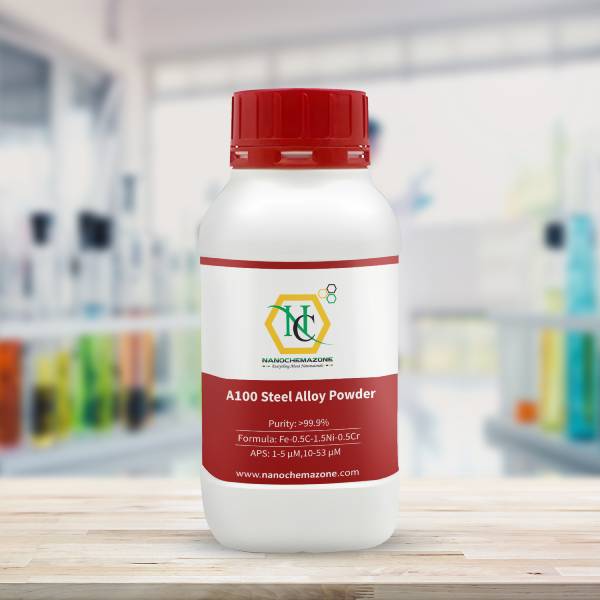
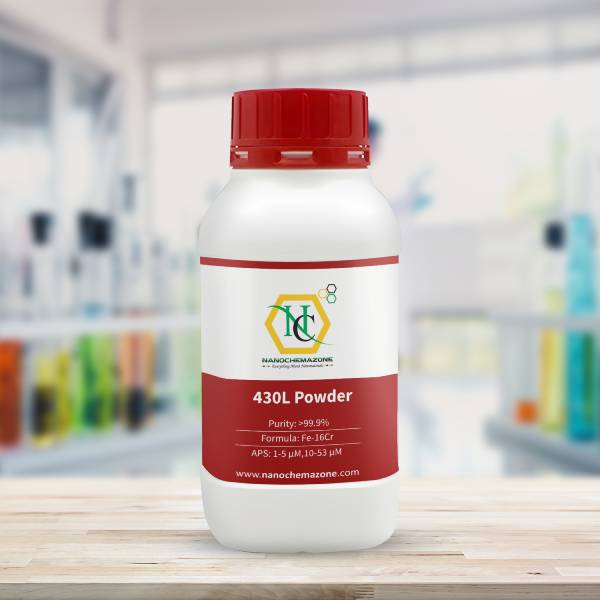
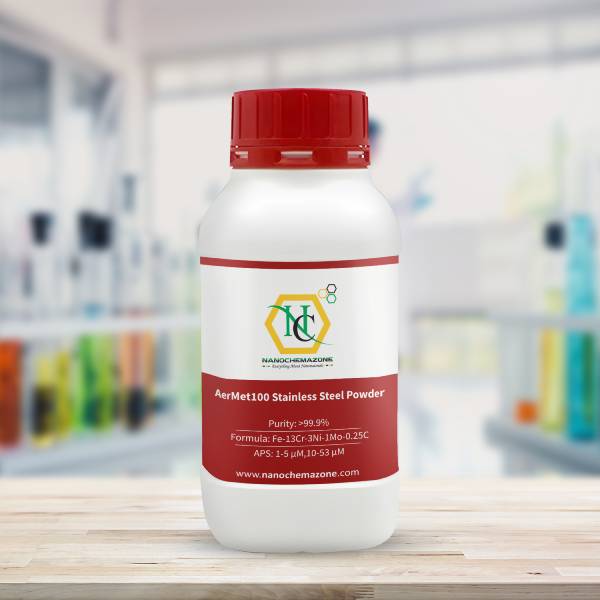
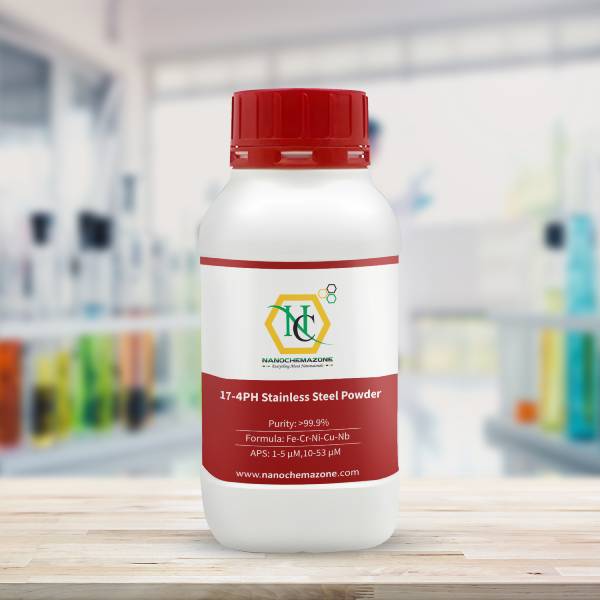
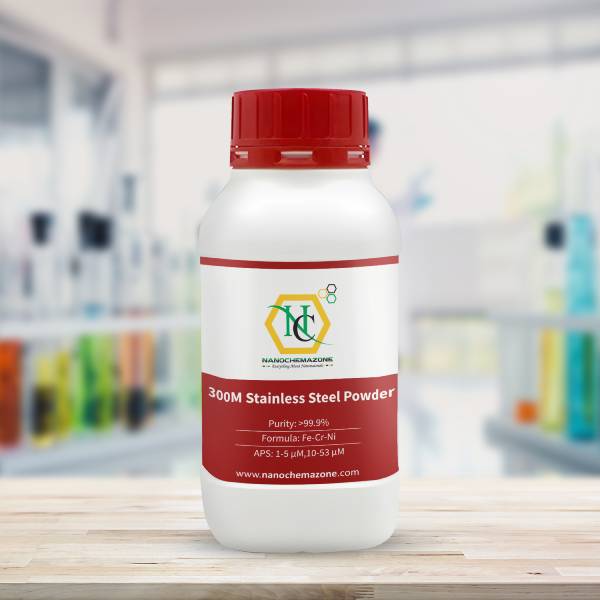
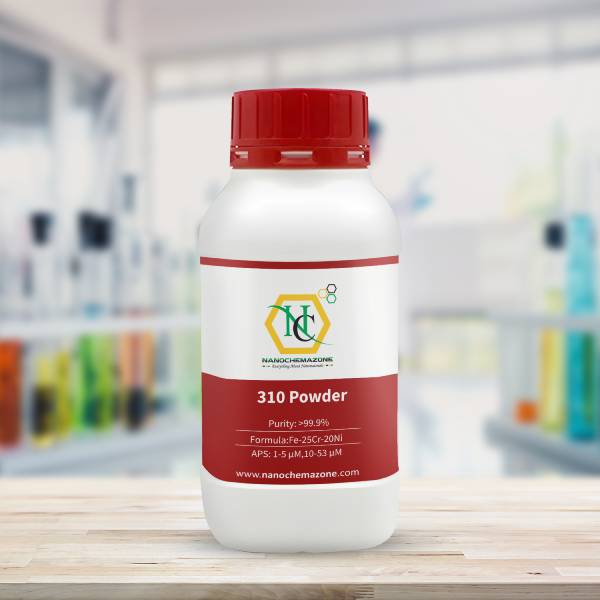
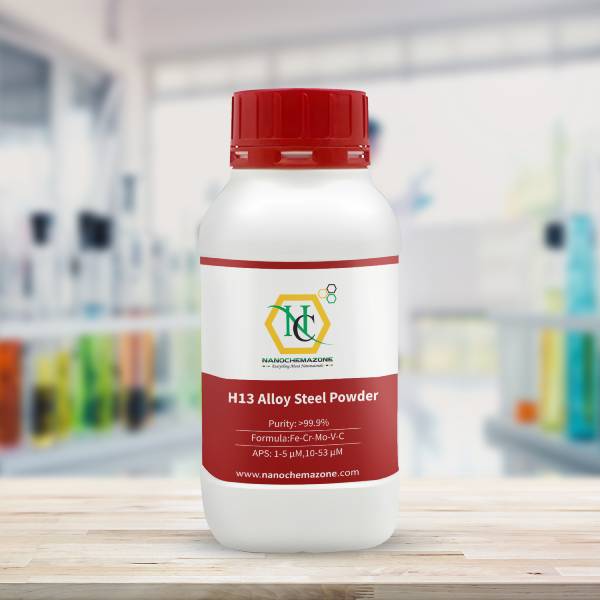
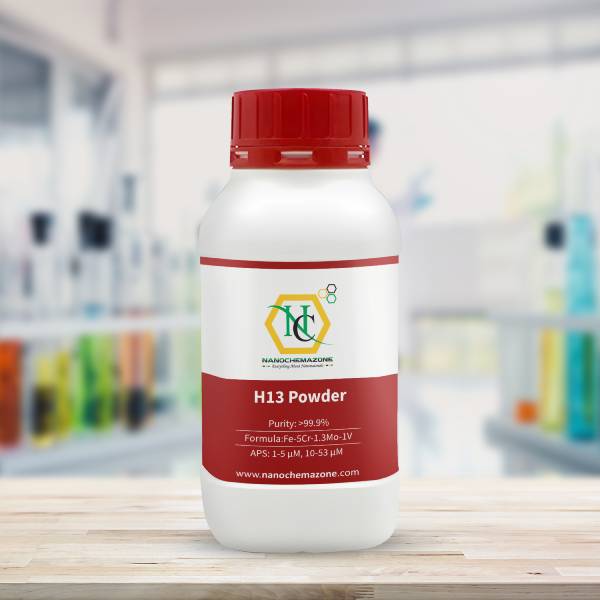
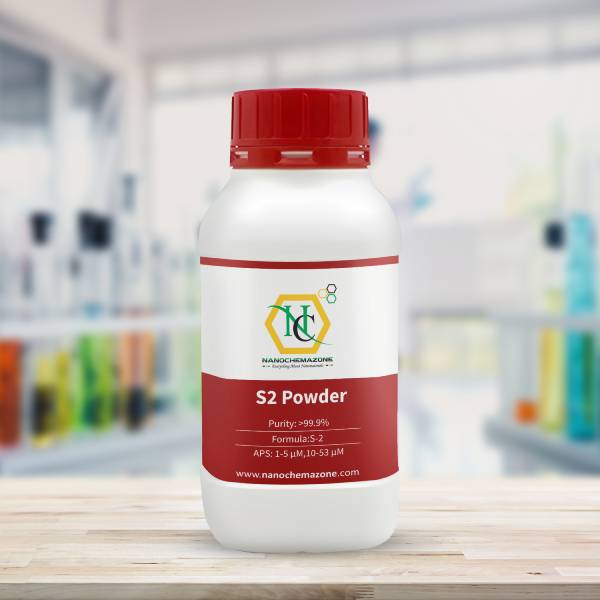
Reviews
There are no reviews yet.